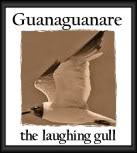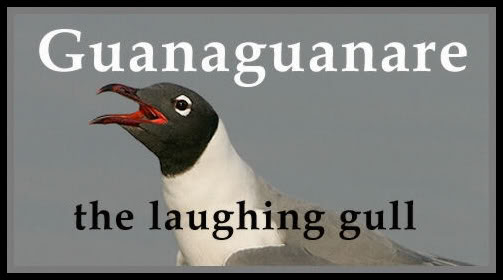THE LOST ATLANTIS.—- F. W. Sieber.
To the Editor of the Literary Gazette.
DEAR SIR,—You have so frequently made honourable mention of the name of Dr. Sieber in the Literary Gazette, that I have no doubt you will be pleased with an extract from a paper by him, under the above title, inserted in the Arehii ftir die gesammte Naturlehre.
Discussing the question of the existence of the Atlantis of the ancients, Dr. Sieber declares his conviction, that the stories related of that country were founded on an actual knowledge of America. He observes, that Columbus was partly led to his belief in the existence of a country beyond the Atlantic, by the pieces of wood, seeds, fruits, &c. of species unknown in Europe, which were frequently cast on the shores of the Old World, between the 20th and 40th degrees of north latitude. There can be no reason (he says) for supposing that the same occurrences were not equally common two thousand years ago, and they could not have escaped the notice of the ancient Phoenecians and Carthaginians; especially as, from want of the aid which nautical science now affords, practical and immediate observations were the only means of giving the greatest possible security to their voyages. Being acquainted with the Cape Verde Islands, he presumes that the Carthaginians in particular, must have had an accurate knowledge of the western shores of Africa, including the whole of the Gold Coast. This being the case, they could not fail to observe the currents in the Atlantic Ocean; and it is therefore probable that some bold and experienced navigator, encouraged by the observations already made, and by his knowledge of the winds prevailing at certain seasons in those latitudes, was tempted to commit himself to the current, and sail into the ocean. In this manner the Carthaginians probably discovered the southern continent of America. Dr. Sieber then proceeds to give an account of the interesting discovery, which has induced him to infer that there was formerly a Greek colony in the Island of Trinidad.
Among the persons whom Dr. Sieber had sent to different parts of the world to form collections of plants, was a Mr. Wrbua, who went for that purpose to Trinidad. On his return to Germany, he gave to Dr. Sieber a small stone, or polished glass paste, which he had found in that Island, and supposed to be a Roman antique. At first, Dr. Sieber thought he was in jest, and was not a little astonished when he learnt from Mr. Wrbna the following particulars of his discovery :
Having made some excursions in the neighbourhood of Port Spain,where he landed, he went for some time to the plain of Maraval, about two leagues distant. He there visited the plantation of Sir. Elias Bossieres, (formerly belonging to Mr. Decamp,) where he was informed that various articles, utensils, vases, &c. which looked like Greek and Roman antiquities, were often found.
Mr. Wrbna having formerly seen the antiquities dug up at Saltzburg, and the place where they were discovered, expressed a desire to examine some of these articles, and the spot where they were found ; but Mr. Bossieres had not any thing to attract his curiosity. The place was, however, pointed out to him, up the little river, on which there was a rough road, sometimes on one, and sometimes on the other side.
About a quarter of a league from the plantation, the vegetation was more luxuriant; and he found himself in the midst of a great number of palms of various species, etuis montnna, bactrys major, minor claratu, and another, called by the inhabitants, cocorite. He saw, also, several kinds of melastomas. Happening to stoop down, he perceived a small stone, which he picked up, and having cleared away the earth adhering to it, found that it was a work of art, which, perhaps, had been worn in a ring, and served as a seal. The inscription upon it seemed to prove that it must be of Greek antique.
Wondering how a country so distant from Europe, and known only within these few centuries, could have been visited by Greeks, he said nothing of his discovery, and went to other parts of the island to continue his search ; for at Maraval he could not find any trace of ancient walls, mosaic work, or any production of art whatever. At Port Spain he heard of monuments of the Indians, of their tools, and other works of art, which had been found or dug up; but nothing whatever of Greek or Roman antiquities. He continued to enquire after such works of the Indians, hoping to discover something which might confirm his conjectures. He visited, among other places, Naparima, a maritime town, six leagues to the south-east of Port Spain. A Scotchman took him to the coffee plantation of his friend, Mr. Don, about half a league from Naparima, where he heard of a supposed Indian burying-ground, on which cocoa and coffee-trees were planted, and near to which, on turning up the ground, earthen vessels were met with, containing nothing but small pieces of burnt bones. The negro slaves generally broke these vessels to pieces, so that the owner of the plantation could show him only two urns, and the lid of another vessel, and fragments of some vases, all of which, however, Mr. Don conceived to be of Indian manufacture.
Mr. Wrbna declares that he cannot but consider the two urns to be genuine Greek, or Roman funeral urn, which, as well as the fragments of the others, perfectly resemble those which he had seen at Salzburg. He himself examined the contents of them and found ashes, with soft friable pieces of bone. Neither figures nor inscriptions were to be distinguished upon them. The form of the vases perfectly resembles hose of I lerculaneum and Pompeii. The most important, however, was a lid; the urn to which it belonged was unfortunately wanting. This lid represented a human head, of very good workman- hip and proportions, which we show below; and from all the explanations of Mr. Wrbna, can be took for nothing but one of the four Canopi. All the vases were burnt clay, and the figure on the lid so regular, that it could not possibly be taken for a work of the Indians, who, as we know, were extremely unskilful in their representations of the human figure. The two vases were so damaged that it could not be decided whether they ever had any figures or inscriptions.
We now proceed to describe the stone. It is four-fifths of an inch long, and rather more than half an inch broad, of an eliptical form, two lines thick, chamfered off at one edge, so that the reverse is smaller than the face. The colour is a smoky black, most resembling a glass paste soft in the grain, like many obsidians of a dead glassy lustre ; the chamfered edges exhibit aconchoidal fracture, and strengthen the opinion that it is of one of the many volcanic substances most resembling obsidian. Glass pastes arc generally rather harder. One side on the edge is purposely cut and the stone appears once to have been set. There is a human figure in the centre. The neck, which is rather long, supports a dog's head ; the body is robust, the shoulders broad, the arms rather standing out, and an Egyptian apron, laid in folds, bound round the waist. The legs below the calf are wanting, the edge being broken off. This Cyuo- cephalus has two ears like those of a dog ; and Dr. S. has no hesitation in declaring this figure to be the Anubis of the Egyptians. The workmanship is better than is usually observed on stones of this kind. On the edge are five letters remaining out of six ; the second is wanting. H. (wanting,) 0, M H N. On the reverse are the following letters, in three lines: B^CCVM HCHB.VAA OMHN
BECCVM
(hchbaas. .omhn
I do not think it necessary to trouble your readers with the long dissertation, in which Dr. Sieber enforces his opinion, that this antique is the work of a Greek artist of Alexandria, in the time of the Ptolomies: whence he would infer that America was really discovered by the Greeks, (not by the Carthaginians,) and that they founded a colony in the New World.
SOURCE: The London Literary Gazette and Journal of Belles Lettres, Arts, Sciences, Etc
Published by H. Colburn, 1825
Original from Harvard University
Digitized 27 Feb 2007
..............................................................................................................................
"Patria est communis omnium parens" - Our native land is the common parent of us all. Keep it beautiful, make it even more so.
Blessed is all of creation
Blessed be my beautiful people
Blessed be the day of our awakening
Blessed is my country
Blessed are her patient hills.
Mweh ka allay!
Guanaguanare














0 comments:
Post a Comment